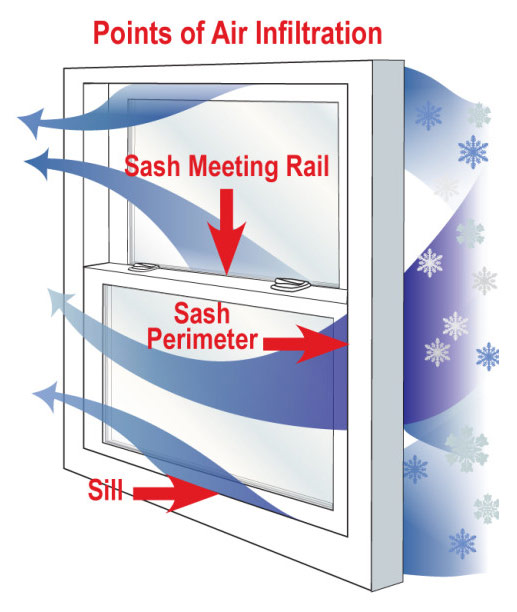Have you ever felt a draft near your windows, even when they’re closed? This could be caused by air leakage, a major factor in your home’s energy efficiency. Poorly sealed windows allow air to pass through, making your home less comfortable and increasing heating and cooling costs.
In this guide, we’ll explain what air leakage means, how to read the air leakage rating, and how to choose windows that prevent drafts and improve insulation.
What Is Air Leakage?
Air leakage (AL) measures how much air passes through a window’s frame and seals. The lower the air leakage rating, the better the window prevents unwanted drafts.
How Air Leakage Is Measured
- Air leakage is measured in cubic feet per minute (cfm) per square foot of window area (cfm/ft²).
- The rating ranges from 0.1 to 0.3 – lower values indicate less air leakage and better sealing.
- Energy Star-certified windows must have an air leakage rating of 0.3 or lower.
Typical Air Leakage Ratings for Windows
| Window Type | Air Leakage Rating (cfm/ft²) | Performance |
|---|---|---|
| High-Performance Energy-Efficient Windows | 0.1 – 0.2 | Excellent |
| Energy Star-Certified Windows | ≤ 0.3 | Good |
| Older or Poorly Sealed Windows | 0.4+ | Poor – Higher air leakage |
Why Air Leakage Matters
1. Energy Efficiency & Utility Bills
- Windows with high air leakage allow unwanted airflow, making your heating and cooling system work harder.
- Lower air leakage windows reduce energy waste and lower utility bills.
2. Home Comfort & Indoor Air Quality
- Drafty windows cause cold spots in winter and hot spots in summer.
- Sealed windows maintain a consistent indoor temperature.
3. Preventing Moisture & Condensation
- High air leakage allows moisture inside, which can lead to mold and window damage.
- Low AL-rated windows keep excess humidity outside.
How to Choose Windows with Low Air Leakage
- Look for Energy Star Certification: These windows meet strict air leakage standards.
- Check the AL Rating: Choose windows with a rating of 0.3 cfm/ft² or lower.
- Choose Vinyl or Fiberglass Frames: These materials provide better sealing than wood or aluminum.
- Ensure Proper Installation: Even the best windows will leak air if not installed correctly.
How to Reduce Air Leakage in Existing Windows
If you’re not ready to replace your windows, here are some ways to improve air sealing:
- Apply Weather Stripping: Seal gaps around the frame.
- Use Caulking: Fill small cracks where air escapes.
- Check Locks & Seals: Ensure windows close tightly.
- Install Storm Windows: Adds an extra barrier to reduce drafts.
Upgrade to Air-Tight, Energy-Efficient Windows
Looking to improve comfort and lower energy bills? Get a free quote for high-performance windows with low air leakage ratings.
Learn More About Window Performance
Check out these related guides:

